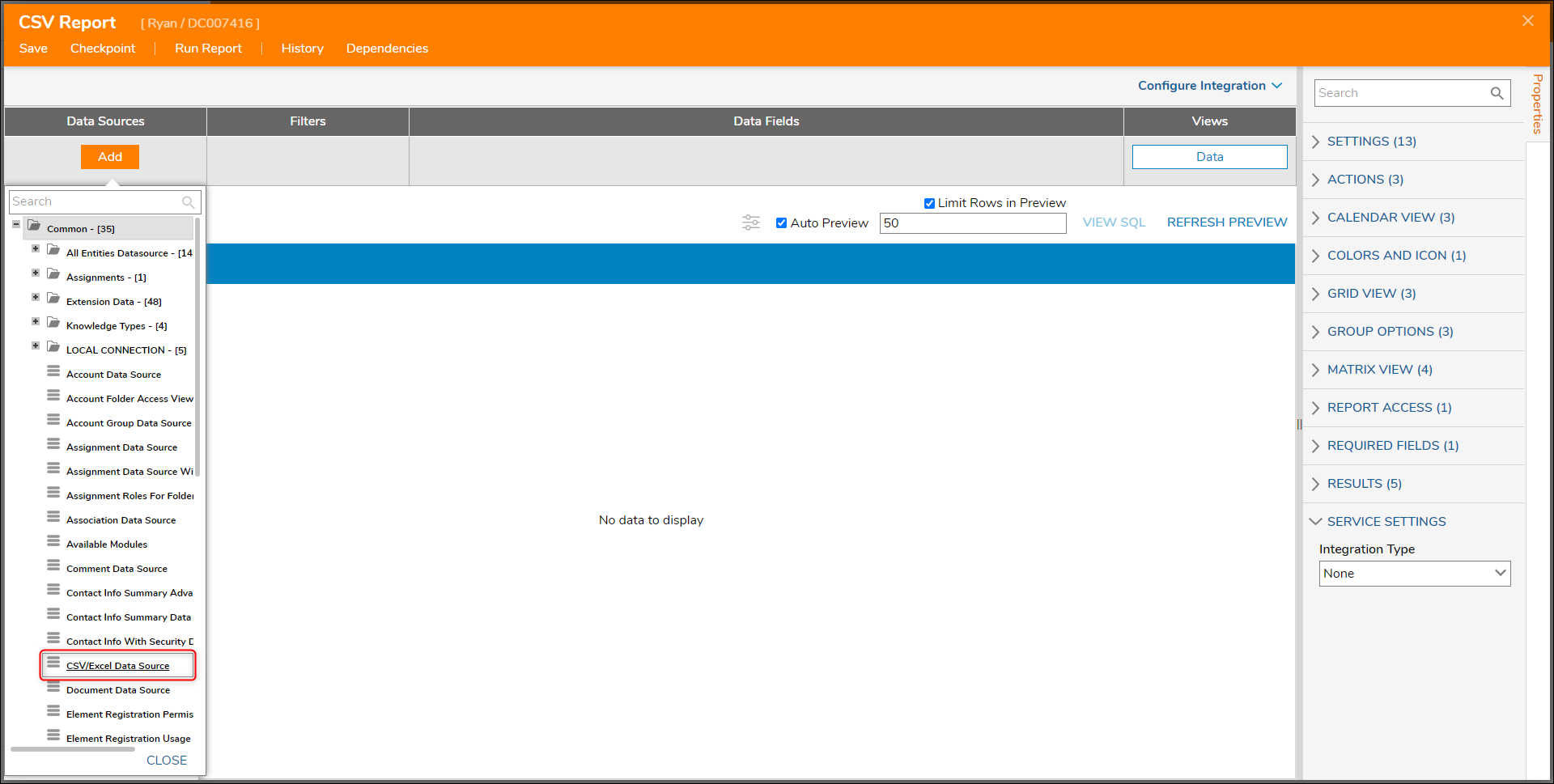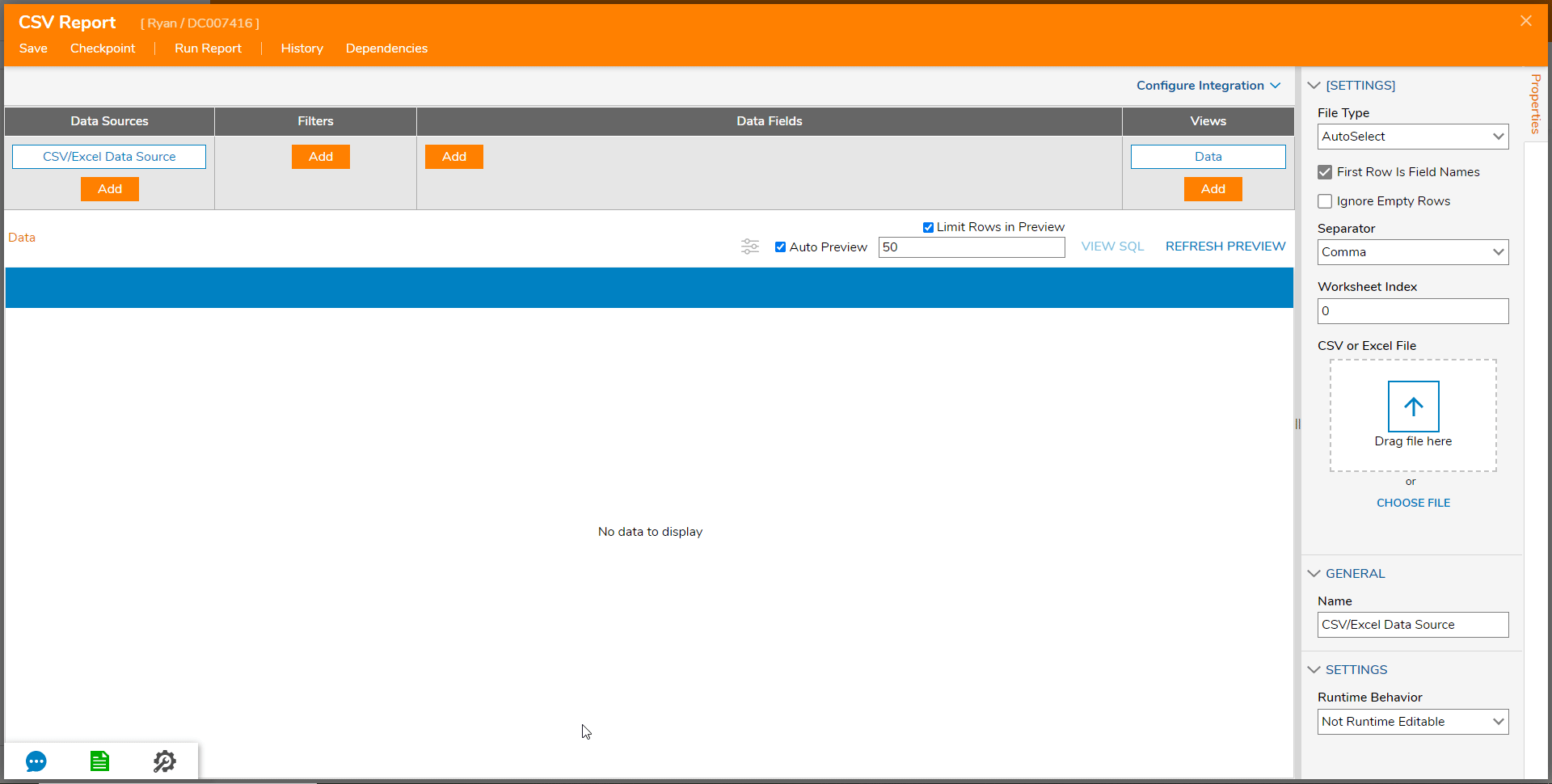Overview
In the Report Designer, the CSV/Excel Data Source is used to import a CSV or an Excel(XLS) file that directly formats into the Report. Once this Data Source is selected for the Report, the properties can provide a location to configure the source file itself, file type, separator, and more. The file type option is preset to AutoSelect and the separator is preset to Comma, these typically suffice for most imports.
The Report sourced from the CSV/Excel file should not have spaces between its field names. If the Report is imported with spacing, the spaces will severely impact performance and create a validation error that will require the user to reformat the Report fields in the CSV/Excel file to remove the spacing.
Example
Prerequisite
The following example demonstrates how to use a CSV/XLS file as a source for a Report. Please visit Create a Report for steps on how to create a Report.
- Select the Add button in the Data Sources section. Expand the Common section of the list that appears, then select CSV/Excel Data Source, and the Properties tab will update accordingly.

- Locate the configuration options under the SETTINGS section of the Properties tab.
- Use the CHOOSE FILE button or drag a CSV/XLS file from the PC file explorer into the upload box. The Report Designer converts the file into a Reportin Decisions and uses the column headers to automatically add corresponding Data Fields.
- The Worksheet Index is to specify a starting point from the CSV data to the Report Designer which defaults to 0. For reference, if it were a 1 instead, the data would have imported with the first row as the headers/Data Fields.
- The Runtime Behavior options can be used to determine whether or not the Report is editable at runtime or if values should be retrieved from another Report at runtime.
